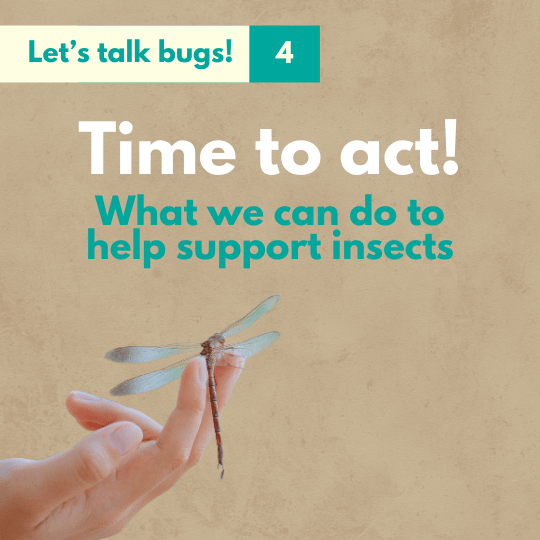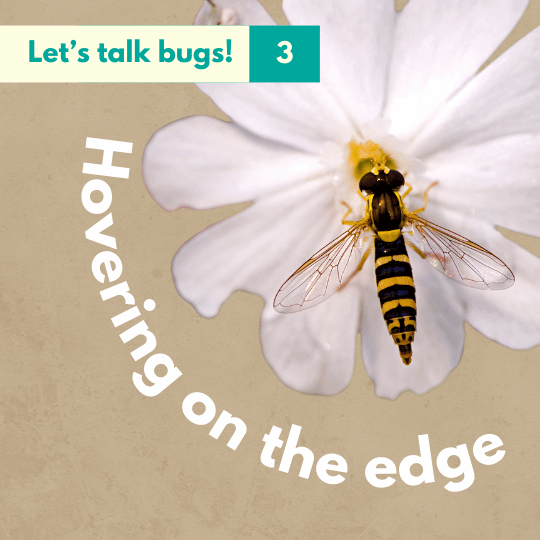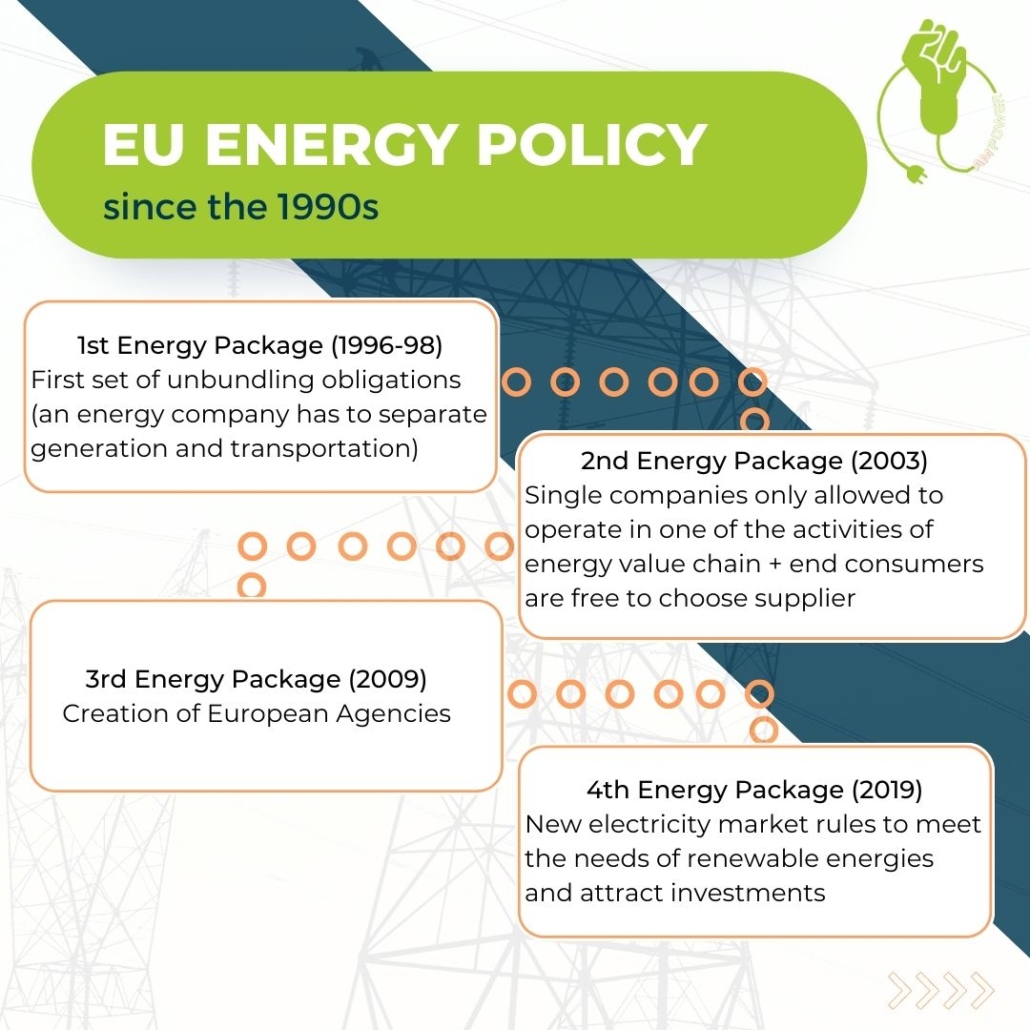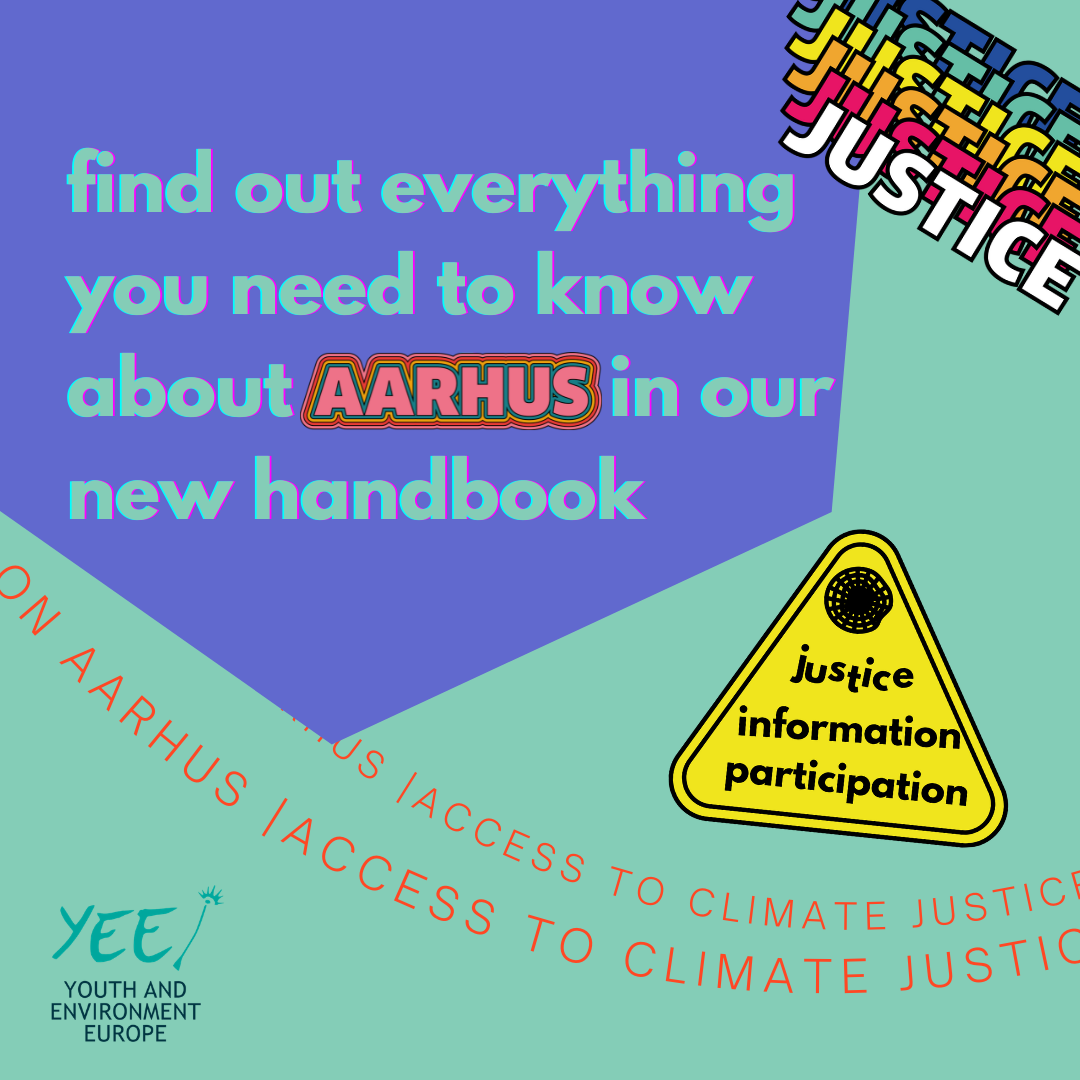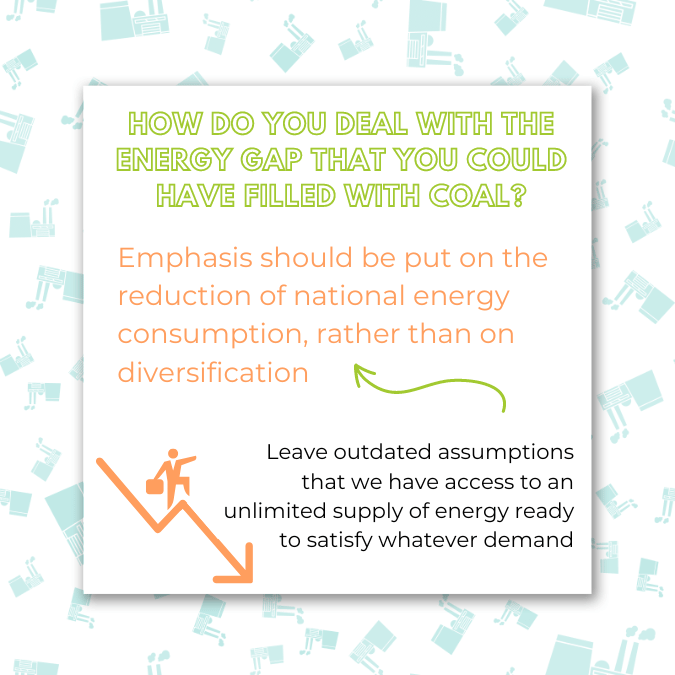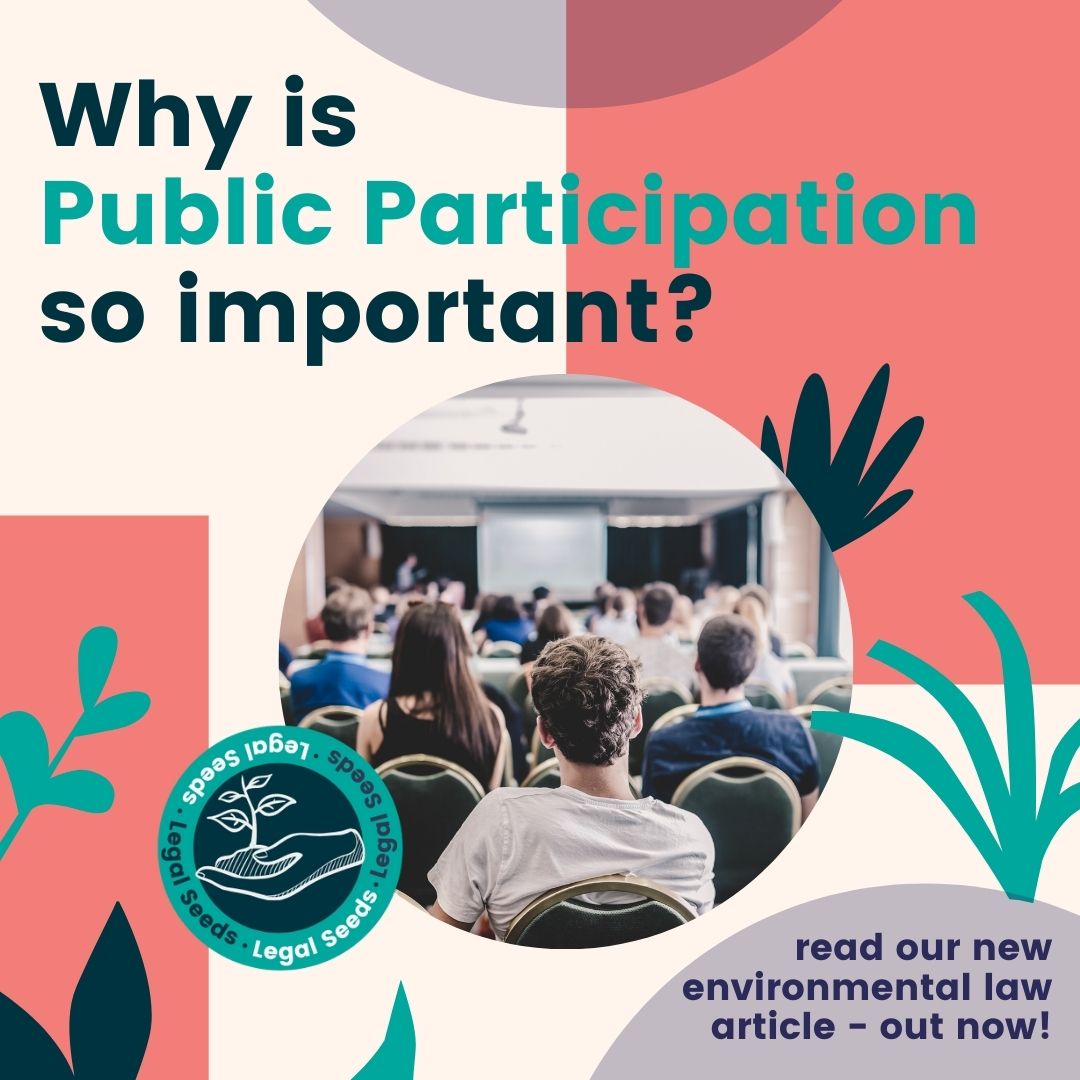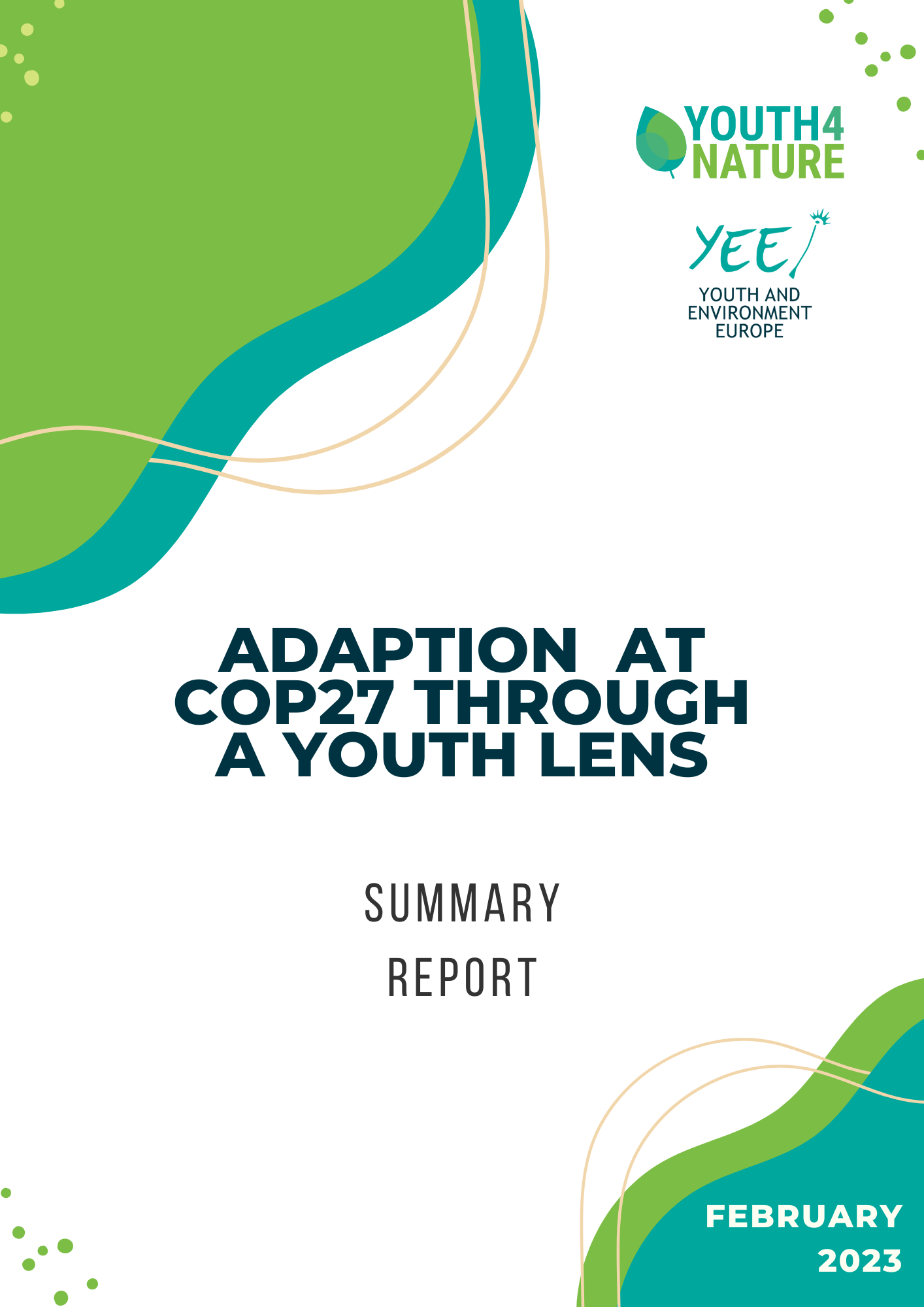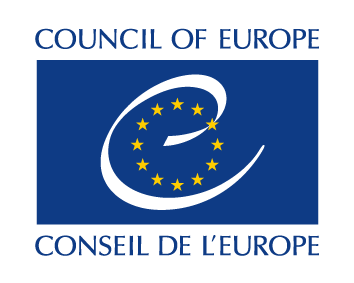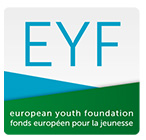
Written by

Ronja Karvinen
What did we ask?
Visual summary










Share this article
Climate litigation is becoming a hot topic, following an upsurge of legal mobilisations globally. In several countries citizens have come together to sue their states for insufficient climate action, and legal mobilisations have opened up new ways to demand climate justice from those in power. A large share of the lawsuits brought forward are driven by young people, who are suing their states for threatening their future human rights. Examples of recent youth driven climate lawsuits include Juliana v. United States, Duarte Agostinho and Others v. Portugal and Others and Soubeste et. al v. Austria et. al.
We had the opportunity to speak to three young people from the organisation Aurora, who are behind an ongoing climate lawsuit in Sweden. On November 25th 2022, Aurora filed a lawsuit against the Swedish state for insufficient climate policies. More than 600 children and youth are behind the lawsuit, including Swedish climate activist Greta Thunberg. The youth are condemning Sweden’s climate policies to be illegal, as the targets set by the Swedish state are too slow and insufficient, while the previously set climate targets remain unachieved. Aurora is thus claiming that Sweden is not treating the climate crisis like a crisis.
The district court of Nacka (a town in Sweden where the lawsuit was filed), considered the claims to be clear enough to be tried in court. On the 21st of March 2023 the Nacka District Court issued a summons, upon which the Swedish state will have three months time to respond to the case. The case is treated as a class-action lawsuit, meaning that a large group of people in Aurora will be represented by a few members of the organisation. The Swedish state on the other hand will be represented by the Chancellor of Justice.
We will now hear from three young people from Aurora: Agnes Hjortsberg (21), Anton Foley (20) and Ida Edling (23), who will share their experiences of filing a lawsuit as a group of young people.

Agnes Hjortsberg

Anton Foley

Ida Edling



What breaches are you suing Sweden on?

Ida
The legal provisions that we say the state has violated is human rights under the European Convention of Human Rights. So we're saying that the Swedish state's lack of sufficient climate measures threatens young people's human rights in the future. We're talking about the human right to life, to health, to dignity, to well-being, to home and to property. And that's Article 2, 3, 8 and 14 of the European Convention of Human Rights - and it's the first article of the first protocol of the European Convention of Human Rights.
How did you start this process?

Anton
A lot of the inspiration to do this came from people who had already done it in other countries. A natural first step, or one of the first steps, was to reach out and make contacts: at the very early stages we had calls and meetings with lawyers and activists who had pursued similar cases in for example Norway, the Netherlands and France. We learned from them both legally how we should approach it, but also how we should approach it organizationally, financially and from a media perspective. And then as we came to terms with what kind of case we wanted to run, or how we should do it, we also had close contact with international climate litigation groups, to sharpen our arguments and learn from their cases. Thus, I'd say there have been two waves of work: The first one is just about figuring out what is going on and how we should do this. And then secondly, once we had it more figured out, on the legal and technical side, we could focus on sharpening the arguments.
What type of competences are needed to file this type of lawsuit?

Agnes
In Aurora as an organisation, almost none of the youth and children had any knowledge of how to do something like this from previous experience. Of course, we have law students who manage a lot of the law stuff, but when it comes to funding, media and social media, or how to run an organisation and how to take care of each other, it's something we learn as we go.

Anton
And we've collected a network of professionals and people who know what they're doing in lots of different areas. For example: legal experts, climate scientists and public relations people to help us figure out how to get our message out there. But also a lot of climate activists helped us figure out what our actual aims are. Because there are lots of ways you could structure this legally, but not all would be desirable for what we actually want to achieve. Thus, “where are we going” is the first question we need to answer. Then, “what do we want to achieve? “ and thirdly “how can we use law as a tool to achieve that?”

Ida
I think that the way we have decided to structure our work within the Aurora case is quite unique. And we've heard that from people who have worked with many different climate cases in other countries too, that our work culture is original because we have a very mixed work culture. We are completely led by youth who have no particular academic background, but who are firmly rooted in what we're actually trying to do. Like Anton was saying, the direction we're actually headed in. And then on the same decision making level or level below even, we have the actual competences. So this democratic way of working together from different age groups and different competence levels is unique I think, and has proven to be very dynamic and successful for us.
What would be your advice to a group of young people wanting to start something similar? What is the first thing to start with?

Agnes
One thing we've begun doing is creating a network of youth doing this all over the world. For example we have contacts in Norway, South Korea, Austria, and the Netherlands. I think one of the first steps is to reach out to one of those groups. We've had meetings with new groups, but we have also been the new group in other meetings. I think using the platforms and networks available is a good tool.

Anton
Yeah, and I think in general, if you're young and you want to make a difference in this or any social or environmental cause, the most important thing to do is to start from where you are and use whatever expertise, interest and platform you have available to you. And if you have a big idea, just go for it! We were just a group of people who thought this would be a cool thing to do and then we started talking to people who knew what they were doing. And then it took a while but over time we assembled this sort of group. And I think that, it sounds very cliche, but just do it, go for it and see where you end up. Nobody thinks they're going to start a global movement when for example deciding to school strike. You just do it because it's the right thing to do and then people sort of catch on. So, I think that wherever you are, start affecting change in your community and whatever spaces you are active in, in school, student unions, trade unions, religious groups, and wherever else you are active. Just start making a difference and speaking up in those circles and then see where it takes you.

Ida
Yeah, educate yourselves, take action and then take inspiration and learn from those who have done similar things before you, because you don't have to reinvent the wheel! The three steps that we advise other youth groups to take, if they also want to sue their states, is to: First find each other and then find competence, find lawyers and scientists, and then find money. Because you will need money. But also remember that all types of legitimate action is vital for sufficient climate action. So, litigation is one way but every other way is also valuable.
How can other young people or youth organisations support Aurora?

Ida
The first thing is to do what you're doing, continue to raise awareness of the climate crisis, continue to push for urgent action in the climate crisis, continue to try to make people in power see that the way we use Earth today is dangerous and won't last. And try to change that in a way that you're already doing, because that will help us all. We're one movement trying to achieve climate justice and everyone needs to do it in their way and every legitimate way is valuable. But then if you concretely want to help our particular cause, we are always in need of money, because holding the state accountable for violations of human rights is very, very expensive in Sweden. And so this would not have been possible without extensive economic support from the public, and here every contribution matters.

Agnes
And also if you're a youth in Sweden and you are interested in Aurora, you can also join Aurora! We always need more people!
More To Explore
How to Sue a State
https://yeenet.eu/wp-content/uploads/2023/05/1.png 675 675 YEE https://yeenet.eu/wp-content/uploads/2018/11/logo-yee-728x1030.png YEE2023-05-11 12:01:402023-07-28 13:15:46How to Sue a StateLiberalisation of the energy sector | Webinar Recap
Overview of the EU’s legislative system and the energy sector liberalisation

Liberalisation of the energy sector
The liberalisation of the European energy sector was the continuation of the European Union’s effort to create a European single market.
The underlying idea is that the creation of an economic union would naturally bring European countries closer together leading to further political integration, thus guaranteeing peaceful inter-state relations.
The main purpose of the liberalisation process was to organise the provision of electricity and gas more efficiently by introducing competitive forces where possible and regulation where needed.
Main barrier to the liberalisation of the energy sector
Up until the 90’s the energy sector was structured around national monopolies preventing any kind of competition to emerge.
A major step in this process was thus to break down national monopolies or what is referred to as “unbundling”.
The first “unbundling” obligations appeared with the 1st energy package (1996-98) and required the separation of generation, transmission, distribution, and retail activities.
Secondly, to increase cross-border exchanges the EU massively invested in interconnections. The European interconnected grid is now the largest in the world with 400 interconnectors (cross border pipeline and electric cables) linking 600 million citizens.
What are the results of this process?
Positive aspects
- Opening the energy market to competition allowed new players to emerge.
- It enabled the establishment of a regulatory framework beneficial to renewable energy production.
- The creation of a large interconnected grid also facilitates the development of renewables as it improves the grid stability. Solar and wind being intermittent energy, it is essential to increase ways to maintain the network’s stability (that means to ensure that production always meets the demand and vice versa).
- Competition also drives innovation and energy efficiency (strong incentive for producers to find ways to produce more with less for a higher margin).
- Renewable energy production costs are constantly getting lower.
Negative aspects
- The price for end-consumers remained unaffected, and the promise of cheaper electricity and gas for the citizen wasn’t delivered.
- The low wholesale market price affects the capacity of large industries to remain profitable.
- The current market design forces the electricity price to be indexed on the most expensive commodity. With the war in Ukraine, gas prices went through the roof, driving electricity prices up (despite low generation costs of renewable and nuclear).
- With the entire energy chain in the hands of private actors, profit becomes the number one priority, ahead of the security of supply. This can cause issues of under-investment in critical infrastructures.
What are Energy Communities (or energy cooperative)?
Legal entities of citizens getting together around an energy transition project.
They run around 7 main principles :
- Voluntary and open membership
- Democratic member control
- Member economic participation
- Autonomy and independence
- Education, training and information
- Cooperation among cooperatives
- Concern for Community
Why are they so relevant to the energy transition?
It is estimated that half of the European citizens could produce their own electricity, covering about 45 % of the overall electricity demand.
89 % of the population could get involved in some energy system activity (for instance with the spreading of electric cars, households could offer energy storage services. Modern appliances like smart metres, remote control thermostats, electric vehicles etc. can offer demand response services*)
Energy cooperatives can get involved in a wide range of activities such as
Production • Supply • Distribution • Flexibility •Storage • Demand response •Energy monitoring •District heating • Transportation – E-car sharing • Energy savings – Collective home retrofits
*demand response: increased flexibility from the demand side to adapt consumption to the available generation.
On top of the technical advantages that the multiplication of energy communities could bring, these structures also fulfil a major social element of the green transition: Citizen engagement. The green transition is not only about switching from dirty to clean energy sources it is rethinking our entire economy and our consumption pattern. By giving the opportunity to our citizens to get directly involved in the energy chain, we create a population more aware of its own consumption and conscient of the behavioral changes needed to achieve our ambitious climate targets.
Major barriers to the creation of energy communities:
- • Access to funding
- • Lack of upfront investments and specific skills: Volunteer-based & lack financial skills. More risk aversion.
- • Lack of knowledge from financing institutions: banks don’t recognize the new and innovative business models of energy communities
- • Lack of streamlined/stable Government financing mechanisms: public finance can de-risk and mobilise further community & private capital
Want to learn more?
Watch this video explanation of the virtue of energy communities
More articles

The war in Ukraine has highlighted the significance of energy policy as a major power issue. It is an opportunity to break

How is our generation responding to the challenges posed by the energy crisis and the imperative for a green transition? This thought-provoking
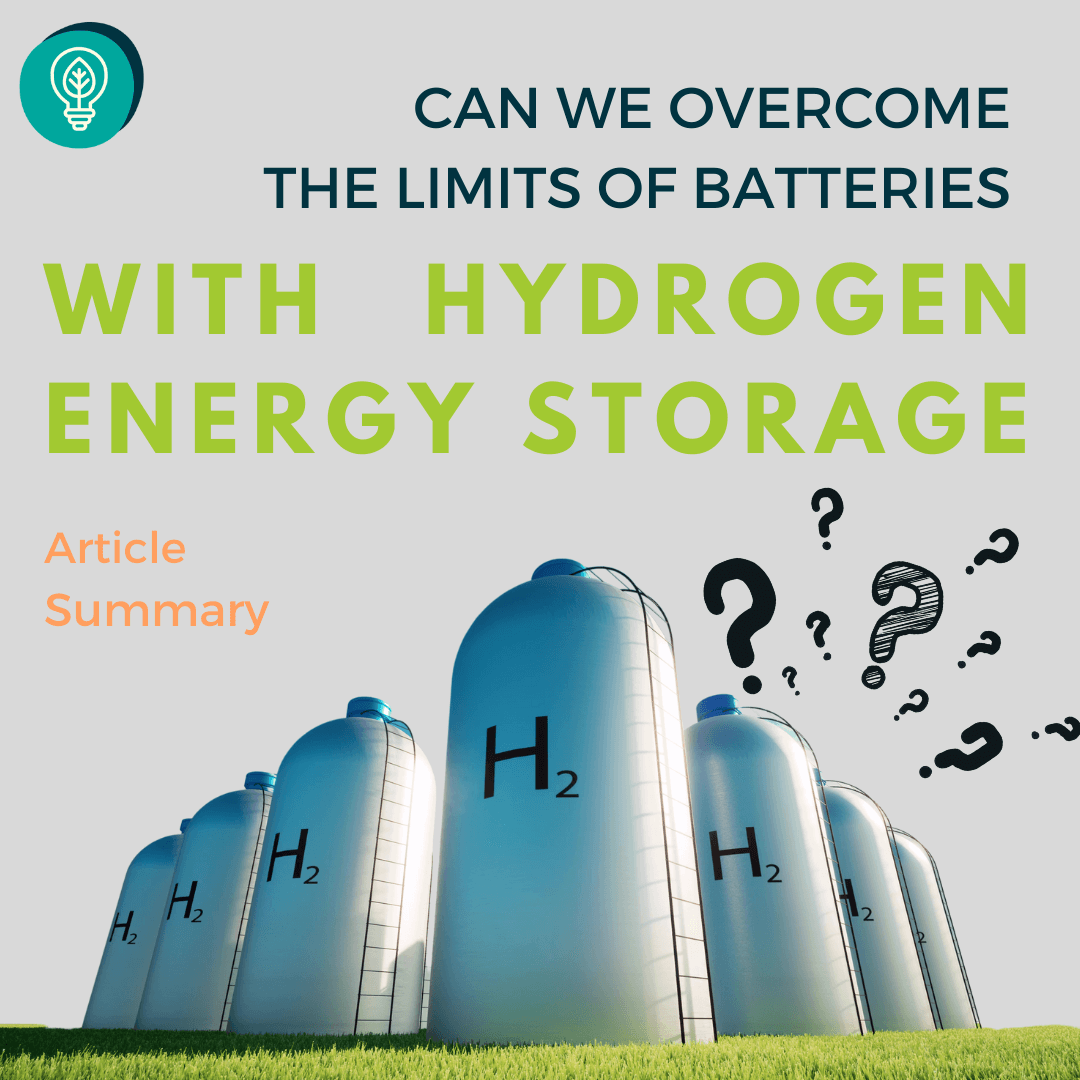
In this article, we will delve into the exciting world of hydrogen as a potential solution for energy storage, aiming to overcome

Learn about the positive and negative outcomes of the liberalisation process, and how energy communities could play a major role in the
More To Explore
Liberalisation of the energy sector | Webinar Recap
https://yeenet.eu/wp-content/uploads/2023/05/1-1.jpg 1080 1080 YEE https://yeenet.eu/wp-content/uploads/2018/11/logo-yee-728x1030.png YEE2023-05-05 14:15:002024-02-22 16:41:37Liberalisation of the energy sector | Webinar Recap
Written by
Haguar Mourad
Contents
Visual summary



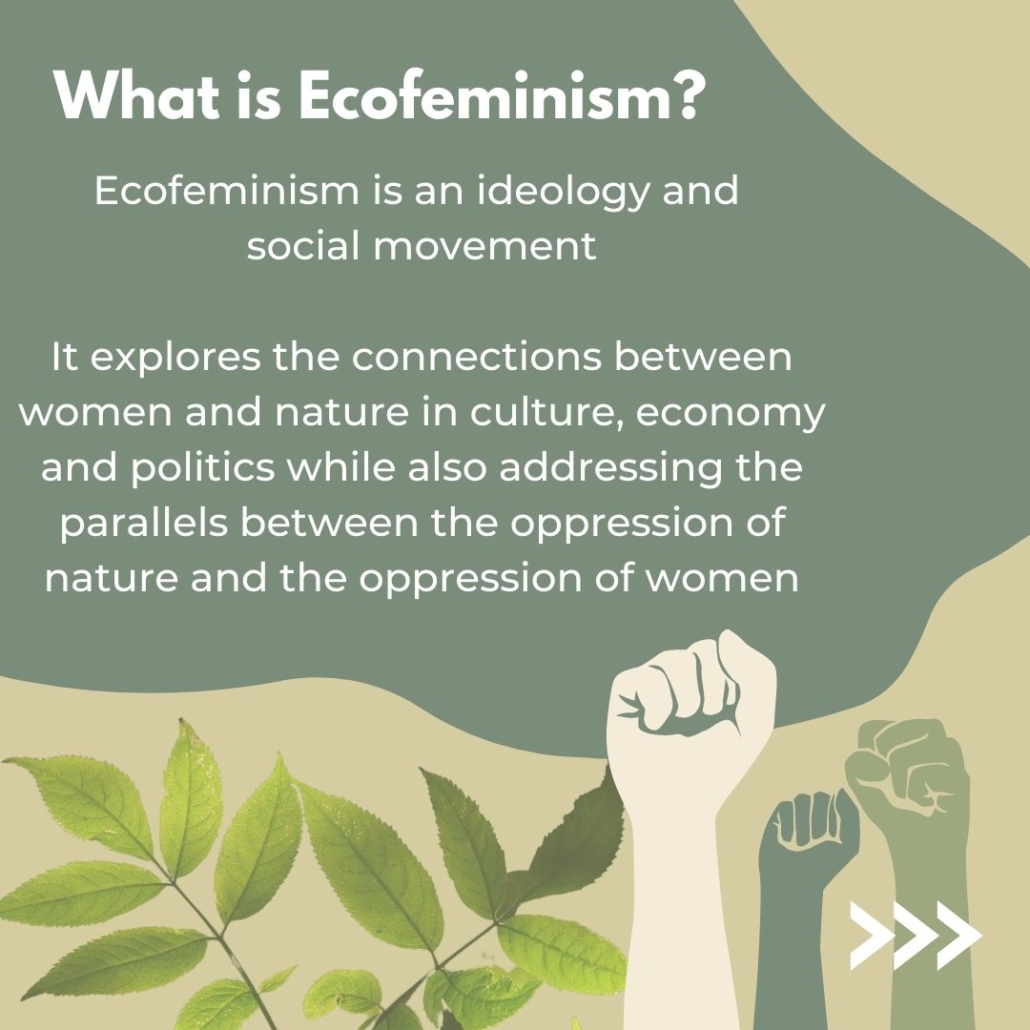

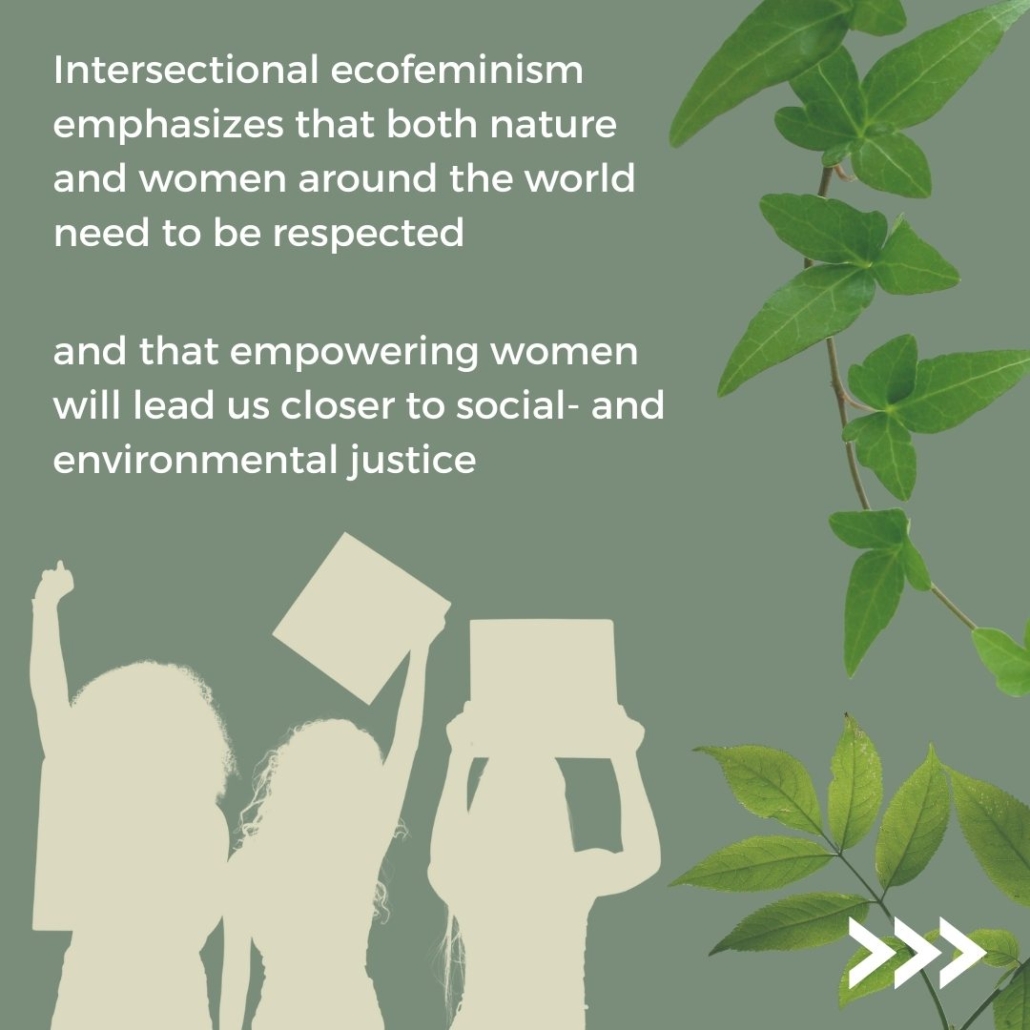
Share this article
“We are either going to have a future where women lead the way to make peace with the Earth or we are not going to have a human future at all.” – Vandana Shiva.
Many women have been remarkably stepping into environmental advocacy spaces to make their voices heard, but how important is it to integrate both feminism and climate activism in our advocacy discourse?
We have all heard activists and seen studies claim that women lead better and are peacemakers as they favour intuition and collaboration, so, could ecofeminism really be the ultimate solution for the environmental debacle we are facing?
The birth of ecofeminism
As we all may know, women are one of the main groups that are at the frontline of climate activism since they are particularly affected by the environmental crisis (80% of the people being displaced by climate change are women according to UN Environment), which is why special attention towards women and the climate change effects on them is needed. This is notably explored by ecofeminism.
The term ‘ecofeminism’ was first coined by the renowned French feminist Françoise d’Eaubonne, who described it to be a branch of feminism that explores the connections between women and nature. What is also interesting about Ecofeminism is that it digs deeply into how both women and the environment are at risk as a result of the patriarchal rule. As a matter of fact, patriarchy has always been strongly linked with capitalism which explains the simultaneous exploitation of both natural resources and women as a social class.
Some not-so-fun facts worth mentioning are that 70% of the 1.3 billion people living in conditions of poverty are women. In urban areas, 40% of the poorest households are headed by women. Women predominate in the world’s food production (50%-80%), but they own less than 10% of the land.
Ecofeminism is believed to be more respectful of nature and women as it decenters males and abolishes hierarchies, men are then not thought to be superior to women or nature. Although ecofeminism originated in Europe, the actual movement started in the USA during the late 1970s and early 1980s, where it took a more inclusive turn as it coincided with the rise of intersectional feminism. Intersectional ecofeminism holistically plunges into the living conditions of women from different backgrounds and dissects the inequalities they endure through an environmentalist lens. It is then considered to be the ideal activistic paradigm.
Why intersectionality is a necessity
While addressing the struggles of women in the context of climate change, the term “women” tends to be vague as they are not a homogeneous group, they actually exist on a large spectrum that should be meticulously analysed hence the need for an intersectional approach.
Intersectionality sheds light on different issues faced by various women, such as the different geographical contexts. As a matter of fact, women face different challenges based on where they’re from. For example, in areas that are prone to droughts, women often face different struggles than men. Environmental degradation such as droughts often leads to economic instability, and as a result, women may have to give up on resources such as education in order to support the family.
Ecofeminism recognises how gender roles make us experience our environment and nature differently, and how different gender roles may experience different consequences. Another example is how women in some contexts are forced to travel long distances to collect fuel, food, and water which subjects them to security risks and gender-based violence. Moreover, in Mexico and Central America between 2016 and 2019, about 1,698 acts of violence were recorded against female human rights defenders.
Different journeys equal different constraints
All struggling communities should then be provided with a platform that allows them to speak up about their experiences and share their stories that are a testament to their resilience. We can never do justice to the representation of the different journeys led by different women in the context of climate change, however, the best we can do is to make their names known, especially the non-white and underrated ones like Isatou Ceesay, Vandana Shiva, Susan Chomba, Sônia Guajajara and many others.
Going back to the initial question, women have the ability to make this world a better place: they are the backbones of their communities and the shapers of the future that we can’t overlook the importance of their role in eradicating the climate crisis, empowering them locally and globally could definitely revolutionise our dystopian foreseeable future.
So, if you were to envision a non-patriarchal world where women were predominantly leaders, don’t you also think that our history and present would have been vastly different?
Recommendations
If you want to explore this topic more, check out the podcast “Outrage + Optimism”, episode number 191.
More articles

The war in Ukraine has highlighted the significance of energy policy as a major power issue. It is an opportunity to break

How is our generation responding to the challenges posed by the energy crisis and the imperative for a green transition? This thought-provoking

In this article, we will delve into the exciting world of hydrogen as a potential solution for energy storage, aiming to overcome

Learn about the positive and negative outcomes of the liberalisation process, and how energy communities could play a major role in the
Intersectional Ecofeminism
https://yeenet.eu/wp-content/uploads/2023/05/1.jpg 1080 1080 YEE https://yeenet.eu/wp-content/uploads/2018/11/logo-yee-728x1030.png YEE2023-05-04 12:43:002024-02-22 16:39:20Intersectional EcofeminismWe need more women in our community
Rahim Zehdiev, a 27-year-old volunteer and green ambassador at Young Improvers for Youth Development in Smolyan, Bulgaria, is passionate about creating positive changes in his community and empowering young people, particularly in environmental issues. He is involved in various projects aiming to address environmental challenges and empower young individuals from marginalised communities.



Tell us a bit about yourself. Who’s Rahim?
I am Rahim Zehdiev, a 27-year-old volunteer and a green ambassador at Young Improvers for Youth Development in Smolyan, Bulgaria. As a member of a marginalised group, I have always been passionate about creating positive changes and empowering communities, especially when it comes to environmental issues.
What are the projects you are working on?
So I got involved with the Young Improvers through their initiative focused on environmental sustainability and youth development. And their mission aligns with my own values and aspirations and I saw an opportunity to make a meaningful impact in my community. I’m involved in their projects like in Erasmus and in European Solidarity Corps. So, I see it as though it’s my own mission.
What’s the mission about?
It’s like a mission because I see the need for change in our community, in our local community and in our community in Bulgaria as well. I want to start involving young people in these projects. So they get empowered and we can together aim for a change.
What kind of communities are you engaging?
I come from a community of Muslim population, we are a minority in Bulgaria. And we face a lot of problems. Things are changing for the better, but we have a lot of issues from the past.
I’m addressing these problems right now with the European projects. When we attend projects abroad, we meet people like us and together, we find better solutions for our problems, because we have a lot of similar issues. And it gives us a shared sense of belonging for us when we share our problems.
How do you engage the local minority?
We are trying to involve a lot of young people in my village, in the area around as well, by attracting them with a lot of things, because nowadays people are not too engaged. We find it difficult to find people who are willing to do activism and volunteer because they are easily distracted by everything else. And it’s even harder in my community because they are marginalised, and they have a lot of different views from the ordinary European people. That is because they are more conservative than the regular Europeans. And it’s very hard, but we find some ways to attract them.
But it’s even more difficult to have a gender balance. We are a lot of boys, and we have like one, two, or three girls in the group. So firstly it’s hard to find people, and then it’s hard to strike a gender balance and to battle the conservative views. It’s really hard, but we are improving every day, and we are finding people in the end.
What do your projects look like?
So our project is aiming to address environmental challenges and empower young individuals from marginalized communities. Our projects involve various activities such as awareness campaigns, educational workshops, and community engagement initiatives. So the projects are created to amplify the voices of those who are often underrepresented or misunderstood in the environmental movement and sustainable change.
What does activism mean to you?
Activism is really important for me because it is the main thing which can change things, and is the force to change something from bad to the better. And that’s exactly what we are trying to do here in my village, in the region, and in Bulgaria as well.
Can you tell me about your personal journey?
Back in 2018, I participated in a project in Turkey in an Erasmus training course and it was the very first experience of these projects for me and that’s when everything started for me. Before that I didn’t know anything about activism, I didn’t know anything about volunteering and then with each new project I participated in, I started to be more active and to volunteer. First of all in our local community, in local projects and then abroad with the YEE team and I have participated in more than 20 projects since then. On the local level I even applied for our own projects and even had my own project in my village for building a youth space here.
What’s next for you?
I am thinking about applying for more projects. I will also participate in some projects with our partners in Europe and abroad. But the local projects are the most important for me.
“Because we have to change ourselves first, then we can share good examples abroad.”
What kind of projects would you want to do in your community right now?
I want to make a screening event to project a movie against the plastic waste in our youth space. I want to play that movie because there is a big issue with plastic waste. Especially older people think that plastic is degradable in water and they throw the trash into the river. We have great nature here but the people do not appreciate it and they’re throwing everything into the river and it gets really messed up.
So I’m not only trying to gain younger people, I’m trying to show even the eldest people here what is wrong. We host a lot of movie screenings, seminars and meetings. We also hosted a climate-themed game.
What was the idea of the game?
It was a card game about climate change, what are its causes and how can we prevent it. It was really nice and a lot of young people gathered but sadly there were no women. This really saddened me, but I’m trying to improve this. I’m trying to fix this and I will do it.
If you could send a message out to these people that you would like to engage more, what would you tell them?
We need change. And we can be the change, because if we don’t act, if we don’t get involved, no one will. And the change is not going to happen by itself. It’s not easy, I know, but we can do it.
Other interviews

It’s our time now! – Andjela Radun | Interview | Showcasing the Unheard
Introducing Andjela Radun – a 19-year-old environmental activist from Novi Sad, Serbia. She is part of Extinction Rebellion and Fridays for Future and other environmental movements where she campaigns against water pollution, air pollution, and deforestation that impact her home.

#YEEinterview: Nuclear Explained
Nuclear weapons and nuclear power have critical overlaps with climate change, from releasing high amounts

#YEEinterview: Swop Shop
Get to know Swop Shop, the first bartering shop in Sweden. Through a system of
Introducing Rahim | Showcasing the Unheard
https://yeenet.eu/wp-content/uploads/2023/10/Rahim.png 675 675 YEE https://yeenet.eu/wp-content/uploads/2018/11/logo-yee-728x1030.png YEE2023-05-02 16:47:222023-10-02 16:51:28Introducing Rahim | Showcasing the Unheard
The Environmental Law Team of YEE participated in the 15th Task Force on Access to Justice, which took place in Geneva from 4 to 5 April 2023. During the meeting, Emma and Alex delivered their statements, contributing to the exchange of information and best practices regarding the implementation of the Aarhus Convention’s access to justice pillar.
The purpose of the meeting was to facilitate the exchange of information, experiences, and best practices related to the implementation of the Convention’s access to justice pillar. The focus of the meeting was on access to justice in cases concerning climate change and biodiversity protection, with discussions covering current trends, barriers, challenges, good practices, and innovative approaches in these areas.

Summary of Emma’s statement regarding the tools to promote Access to Justice
The latest IPCC report emphasizes that climate change will mainly impact children and young people, highlighting the need for long-term considerations and intergenerational equity in environmental legislation. Young people also face challenges in exercising their rights under the Aarhus Convention. The Aarhus Convention is important for environmental democracy, granting the public rights in environmental matters to protect the rights of present and future generations. Strengthening multi-stakeholder dialogue can ensure easier youth access to decision-making processes and hold institutions accountable.

Summary of Alex’s statement regarding Access to Justice in energy-related cases
Dependency on fossil fuel imports hampers energy independence and is finite, posing a threat to future generations. The Aarhus provisions play a crucial role in ensuring that energy supply in the EU has a positive impact on nature and communities. However, legislative proposals may impede access to justice in energy-related cases, prioritising renewable energy development over environmental protection and community engagement. The Aarhus rights, including access to justice, play a crucial role in promoting renewable energy, environmental protection, and public participation.
Learn more about the Aarhus Convention
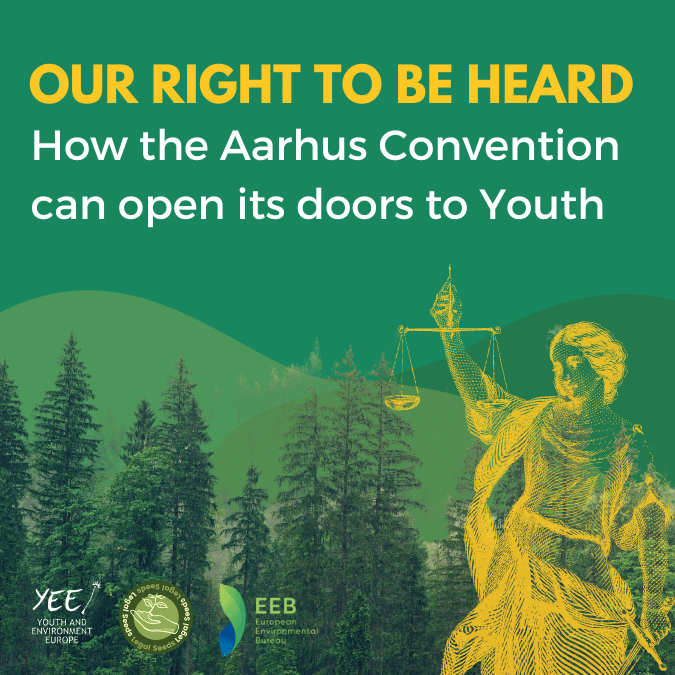
Why Aarhus State Parties fall short of their obligation to guarantee the right to public participation of young people in environmental decision-making?
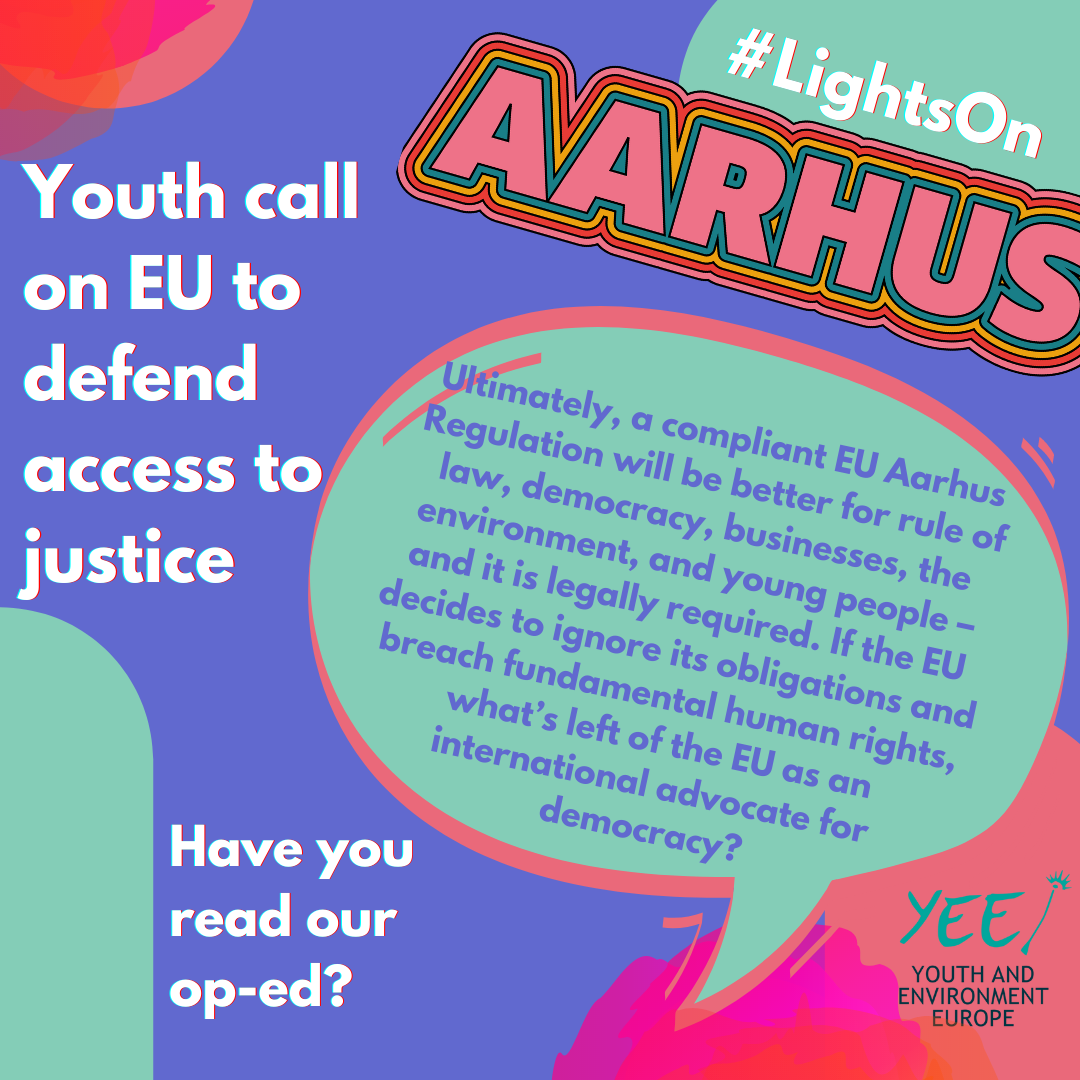
The EU is in breach of its obligations under the Aarhus Convention. Young people all over Europe are joining civil society organizations
More To Explore
15th Task Force on Access to Justice | Statements of the Environmental Law Team
https://yeenet.eu/wp-content/uploads/2023/08/15th-Aarhus-Taskforce-Access-to-Justice.png 810 810 YEE https://yeenet.eu/wp-content/uploads/2018/11/logo-yee-728x1030.png YEE2023-05-01 14:40:002023-08-01 15:22:3315th Task Force on Access to Justice | Statements of the Environmental Law TeamWe need to find a reason to grow
Mihai Oancea, a young Romanian from a traditional Roma community, is a founder of the youth NGO, ROMA T.E.A.M. Association. They offer mentorship programs and screening activities for vulnerable communities, with a focus on empowering young people. Mihai’s vision is to create community centers for education and mental health, and he believes that Roma people should be involved in different contexts to fight against racism and make the community more inclusive.


Tell us a bit about yourself. Who’s Mihai?
My name is Oancea Mihai. I’m from Romania. I’m 27 years old, and I’m currently living in Bucharest, but I’m from Argeș County, from a traditional Roma community.
What are the projects you are working on?
I have a youth NGO called ROMA T.E.A.M. Association, but I’m also working for another NGO. I work for the Roma Center for Health Policies-Sastipen in Bucharest. I engage with a lot of Roma and non-Roma communities in screening activities of people from rural and urban areas, but mainly focusing on vulnerable situations. Us, as the young people working there, we found out that the young generation there is not active at all within the communities.
After visiting a lot of different communities, we concluded that we should help. We started a mentorship program in some of the communities that we have been involved in. And after the program was set up, we wanted to carry on. We decided to open a youth NGO, a Roma youth NGO, but not helping just Roma people, because were going for diversity.
We tried to gather resources in order to attract young people. We are trying to grow the organisation into working at the grassroots level with the people. So we have so many plans, but we will take it step by step.
How are you attracting young people to join you?
All of us come from rural communities. We are Roma people. We are also non-Roma people. We have been there. We know how it is. We know how to handle difficult situations and how to attract people. Because we have been in their situation. This is the key that we are using in order to work with them.
What about your personal journey? How did you get to where you are?
One day, someone from an organisation called me, asking me to deliver some packages for the kids at the Christmas market. And I knew the organisation was working with people with fewer opportunities in vulnerable situations. And I’ve been there as well.
I knew how the people were feeling. I asked the project coordinator if I could help out with something or if I could do something for the children.
I wanted to be a volunteer. I started to volunteer with the children. I was doing their homework with them. I was providing them with food to eat and then cleaning after them. And they started to call me a teacher. It was a big step for me, wow, they are calling me a teacher.
It was a very nice opportunity to try to get more involved in other people’s lives, especially with the young people, Roma and non-Roma people.
When I moved to Bucharest for university I knew someone who, at the time, was working for the first Roma organisation from Bucharest. I became a volunteer there and I participated in their projects. I met a lot of people.
Then I visited a youth NGO and I saw something different from what I had done before. I wanted to get more involved. I got involved with the Romanian Roma Youth Civic Union, a nationally known organisation, where I continued to work for young people, especially for Roma youth. For a few years, I organised activities such as youth forum rights and human rights activities.
I enrolled in the postgraduate program here in Bucharest, and I started to work for the Roma Centre for Health Policies-Sastipen. Here we started creating new opportunities and meeting new people. That is how I ended up opening a youth NGO for Roma people and continuing working for the old NGO in the health sector.
What is your vision?
When we started the NGO, we felt that we needed to do a different kind of work, that was more grassroots level. We are working at the grassroots level and trying to empower young people, as well as working with parents from rural communities.
“What we aim to do is try to change the mentality of the people, to show them new opportunities, to empower them to shape their own future, knowing they can decide what to do with their future and that they have a right to it. “
We go to the rural communities, we work with the children and as they grow up, they know that they will have opportunities. Their teachers and parents will also be involved in their personal development, this is the key.
What is your strategy?
We would like to have a community centre, not just one, but one for each area that we work in. That is a big plan for the future.
For the moment, we want to focus on small communities and grow step by step. We are involving the local authorities in the young people’s education and we try to work with the teachers because they are key in supporting students with their studies and letting them know that it is important to believe in themselves. We also want to start focusing more on mental health. We are part of the French Embassy and Youth French Council from Romania where we applied for a project focusing on mental health.
We chose a high school from Bucharest, to have a pilot project. It is very important to start talking about mental health in these communities, as Roma people experience a lot of discrimination and this is one part of the puzzle to combat it. Focusing on mental health is very important in order for the students to be motivated to go to school, to try to and see other things in their life.
If you could send a message to the young people out there, what would it be?
I would have wanted to know about the opportunities that were out there back in my childhood. I didn’t know that I had the opportunity to get educated about my financial situation, personal development and other things. The thing is that we need to find a reason to grow. We need to find a reason to go to school and we need to find a reason to see life with new eyes.
And we need to search for that, not just stay in one place waiting for it. Try to look for the things that you need in your life. Try to communicate more with your parents, with your teacher, and with yourself, it’s very important.
Try to work with yourself. Get to know yourself. Try to see what are the challenges in your life in order to challenge them.
Transform yourself. Go for the opportunities.
The Erasmus Plus project is helping a lot. This is an opportunity to show young people with fewer opportunities other perspectives of life, to meet new people, experience new cultures, and share theirs.
“When I first went to an Erasmus Plus project, I met Roma people from Greece. I’m Roma from Romania. We spoke the Romani language. It was like a revelation. Look what happened. Look how nice it is.”
Erasmus Plus projects are also an important opportunity to involve people and try to insert themselves in new contexts. It gives them the opportunity to consider that they can be a teacher, they can be a doctor, they can become a lawyer.
As a Roma community, we have experienced a lot of discrimination, racism, and slavery, and we have been through the holocaust. I want to be there when people learn about that. I want to see the young generation spreading the information in order to fight against racism and make the community more inclusive so that people can understand us better. We are not different. We have been there in war, we have been there at the dawn of society. We have a culture and we have perspectives.
Other interviews

It’s our time now! – Andjela Radun | Interview | Showcasing the Unheard
Introducing Andjela Radun – a 19-year-old environmental activist from Novi Sad, Serbia. She is part of Extinction Rebellion and Fridays for Future and other environmental movements where she campaigns against water pollution, air pollution, and deforestation that impact her home.

Introducing Kacper | Showcasing the Unheard
Kacper Lubiewski is a 19-year-old Israeli-Polish climate activist living in Berlin. He started his activism in 2019, joining the climate movement in the same year. He is also a member of a housing activist group. For him, activism means working towards change and making a difference. He encourages those interested in activism to research their chosen cause, find a community, and take care of themselves to avoid burnout.

Introducing Alex | Showcasing the Unheard
Alex is a 22-year-old Cypriot-Greek activist who became passionate about environmental protection after witnessing forest fires near his home and the subsequent destruction of the ecosystems. Alex is currently involved in an initiative fighting the Energy Charter Treaty, which allows fossil fuel companies to sue governments that shut down their operations.
Introducing Mihai | Showcasing the Unheard
https://yeenet.eu/wp-content/uploads/2023/10/mihai.png 675 675 YEE https://yeenet.eu/wp-content/uploads/2018/11/logo-yee-728x1030.png YEE2023-04-05 13:08:542023-10-05 13:14:02Introducing Mihai | Showcasing the UnheardIs the Global Biodiversity Framework enough?
Discussing the outcomes of COP15 and the next steps

Written by

Heather Needham

Sophia Ullrich
Contents
Visual summary












Share this article
The Biodiversity Crisis
It is 2023 and we are in the midst of the 6th mass extinction. Unlike the five extinction events before, this one is primarily caused by human activity and the unsustainable use of land, water, and energy. According to the latest Living Planet Report, published in 2022, there has been an average 69% decline in monitored global wildlife populations between 1970 and 2018.
Due to the interlinked nature of the climate and biodiversity crises, rising temperatures are already causing mass mortality events, causing entire species to go extinct. Climate change is expected to replace land use change as the main driver for biodiversity loss if the 1.5-degree target will not be met, underlining the urgency of bold action on both crises.
The 15th Conference of the Parties (COP) of the Convention on Biological Diversity that was held in December 2022 was a crucial moment for 196 countries to come to an ambitious agreement that would put us on the path to come to “peace with nature“. With the stakes as high as they are today and none of the Aichi targets of 2010 being met, the hopes for a complementary goal to net zero by 2050 – net-positive biodiversity by 2030 – were high, together with the delivery of strong targets to set us on the path to a safe future for humanity.
What is the Convention on Biological Diversity?
In 1992, a historic international legal instrument (known as a treaty) for the conservation and sustainable use of biodiversity, and equitable sharing of genetic resources was agreed in Rio de Janeiro, Brazil. Today, 196 countries have ratified the treaty, known as the Convention of Biological Diversity (that’s nearly every country on the planet!).
The Parties of the CBD, meet regularly every two years to set commitments and global targets. In 2010, the countries united to set the twenty Aichi Biodiversity Targets (under the CBD Strategy Plan for Biodiversity 2011-2020) in order to make radical changes to protect and prevent irreversible biodiversity loss across the world. A decade later, on the expiration date, disappointingly, in a UN report, it was found that not a single one of the targets had been met.
With biodiversity declining rapidly over the last decade, an agreement and agenda for 2030 and 2050 was urgent. Two years delayed (December 2022), the members of the CBD met for COP15 which was held in Montreal, Canada with the goal to finalise and agree to targets for protecting and enhancing nature for 2030 and 2050.
Global Biodiversity Framework
The conference concluded with an international agreement that set new goals and targets, recognised as the Kunming-Montreal Biodiversity Framework (GBF). The GBF includes four overarching goals and 23 targets to achieve by 2030.
Kunming-Montreal Global Biodiversity Framework: 23 targets
| Target | Description |
| 1 | Effective management of land- and sea-use change, loss of highly important biodiverse areas close to zero by 2030 |
| 2 | Effective restoration of 30% of degraded ecosystems by 2030 |
| 3 | Effective conservation and management of 30% of land and 30% of oceans by 2030 |
| 4 | Halt human-induced extinctions and maintain and restore genetic diversity |
| 5 | Sustainable use, harvesting and trade of wild species |
| 6 | Mitigate or eliminate the impacts of invasive alien species, reduce the rates of establishment of invasive species by 50% by 2030 |
| 7 | Reduce pollution risks and impacts from all sources by 2030, reduce the overall risk from pesticides by half |
| 8 | Minimise the impacts of climate change and ocean acidification on biodiversity |
| 9 | Ensure sustainable use and management of wild species, while protecting customary use by Indigenous peoples |
| 10 | Sustainable management of areas under agriculture, aquaculture, fisheries and forestry |
| 11 | Restore and enhance ecosystem function through nature-based solutions and ecosystem-based approaches |
| 12 | Increase the area and quality of urban green and blue spaces |
| 13 | Fair and equitable sharing of the benefits arising from the use of genetic resources |
| 14 | Integration of biodiversity into policies and development across all sectors |
| 15 | Enable businesses to monitor, assess and disclose their impacts on biodiversity |
| 16 | Encourage sustainable consumption, including by reducing food waste by half by 2030 |
| 17 | Strengthen capacity for biosafety measures and ensure benefits-sharing from biotechnology |
| 18 | Phase out or reform harmful subsidies in a just way, reducing them by $500bn by 2030 |
| 19 | Substantially increase financial resources, mobilise $200bn per year by 2030 from all sources, including $30bn from developed to developing countries |
| 20 | Strengthen capacity-building and technology transfer |
| 21 | Integrated and participatory management, including the use of traditional knowledge |
| 22 | Equitable representation and participation of Indigenous peoples and local communities |
| 23 | Ensure gender equality in the implementation of the framework |
30 by 30
One of the targets that had been on the agenda far in advance is target 3. Pushed for by the High Ambition coalition (an intergovernmental group of more than 100 countries), the target calls for 30% of the earth’s land and sea to be effectively conserved and managed by 2030. This should be achieved through the establishment of protected areas (PAs) and other area-based conservation measures (OECMs).
On a European level, the most important categories of PAs are the Natura 2000 network established through the Birds and Habitats Directives, the Emerald network and UNESCO Biosphere reserves. Target 3 acts as the replacement of Aichi target 11, which aimed for the protection of at least 17 percent of terrestrial and inland water, and 10 percent of coastal and marine areas. While that target was not met on a global level, it was partially successful in numbers, the number of terrestrial PAs increasing from 10% to 15% and from 3% to around 7% in marine areas, as reported in the Global Biodiversity Outlook 5.
However, concerns regarding the actual quality of the PAs were high, as many lack connectivity, don’t always safeguard the most important areas for biodiversity and are not equitably and effectively managed. The quantity vs. quality debate is continuing now with the 30 x 30 target, demanding the GBF to emphasise the quality of PAs and OECMs to accompany the 30% target.
In connection to target 22, which calls for equitable representation and participation of indigenous peoples and communities (IPLCs), there is serious concern about the 30 by 30 target on indigenous rights, as it fails to recognise indigenous rights as a separate category of PAs. In a joint statement, a group of major human rights organisations such as Amnesty International claimed that the target “will devastate the lives of Indigenous Peoples and will be hugely destructive for the livelihoods of other subsistence land-users, while diverting attention away from the real drivers of biodiversity and climate collapse”.
This so-called “fortress conservation” describes conservation initiatives that focus on nature in the very narrow sense and don’t take traditional territories and livelihoods of IPLCs into account, not acknowledging traditional knowledge. Studies have found that areas managed by indigenous communities contribute equally as much to global biodiversity conservation as state-governed areas and other governance types.
Increase finance for biodiversity
Target 19 of the Framework aims to mobilise at least US $200 billion per year in international biodiversity funds and raise international financial flows from developed to developing countries to at least US $20 billion per year by 2025, and to at least US $30 billion per year by 2030.
Directing funds towards developing countries is important since they are often home to the largest share of the world’s biodiversity and face significant economic challenges that can make it difficult to invest in biodiversity conservation and restoration efforts. However, according to a report from the Nature Conservancy, at least $700 billion (again, instead of US $200 billion) a year is needed to fund activities that benefit nature and resultantly, reverse global biodiversity loss by 2030. Therefore, there is a shortfall in international biodiversity funding and concerns about how the gap in biodiversity finance will be achieved.
In addition at the Conference, it was agreed that the Convention through the Global Environment Facility (GEF) will set up a Special Trust Fund (known as the GBF Fund) to act as a financial mechanism for the implementation of GBF. However, the GBF is seen as a shortfall since the Parties failed to create a dedicated international biodiversity fund separate from the existing GEF fund. The GEF is under-resourced and also addresses other global issues such as climate change (it funds UNFCCC and the Paris Agreement). Moreover, there are issues accessing the GEF funds and bias of funding towards countries that have the capacity to submit proposals.
Reduce environmentally damaging subsidies
Target 18 of the Framework aims to phase out or reform harmful subsidies for biodiversity and reduce them by at least USD 500 billion per year by 2030. A study this year found that global governments spend at least $1.8 trillion a year (equivalent to 2% of the global GBP) on subsidies that harm the environment. Fossil fuel, agriculture and water industries receive 80% of these EHS per year. A similar target for reforming subsidies was part of the Aichi targets which wasn’t achieved. Governments failed to act on subsidies and there is concern that Target 18 of the GBF might not be reached. The loss of biodiversity from perverse subsidies undermines and works against the goals of the CBD.
There is a need to redirect a significant proportion of the subsidies to support policies that are beneficial for nature, rather than “financing our own extinction”. Redirecting and repurposing subsidies can make an important contribution to finding the US $700 billion per year in biodiversity funding needed. In the EU Biodiversity Strategy for 2030, the European Council pledged to phase out EHS and reform subsidies that have negative impacts on biodiversity. Moreover, the EU is working to reform the Common Agricultural Policy, which has historically supported intensive farming that can contribute to biodiversity loss, to promote more sustainable farming and reduce the use of pesticides and fertilisers. In addition, the EU’s Common Fisheries Policy includes measures to promote sustainable fisheries management and reduce the environmental impacts of fishing activities.
Youth NGOs and their role in nature conservation
While The Global Biodiversity Framework has increased ambitions compared to its predecessor, is without a doubt an imperfect solution. Calls for higher numbers in funding, changes in the funding structures as well as concerns about indigenous rights and the quality of Protected Areas are credible and are just examples of weak points of the GBF.
To save the trust in and credibility of the agreement, the actual implementation of the targets in the coming 2 years (until the next CBD COP) will be crucial. If done right, the agreement does have the potential to make a difference in biodiversity conservation on a global scale. However, taking into account the lack of quantifiable measures that make it possible to hold countries and governments accountable, the role of actors of the civil society and ultimately Youth is undeniable and should act as a motivation to push for the implementation of the agreement.
Prior to the Conference, the Global Youth Biodiversity Network (GYBN) had expressed strong concern that judging from the draft agreement, the GBF would lead to another decade of „more of the same“, describing a lot of the proposals as „false solutions“. Following the activities of Global youth networks and NGOs such as the GYBN is the first easy step you can take to step up for global biodiversity conservation. Holding governments accountable is up to us, especially considering the fact that the agreed targets are not legally binding for the signing parties. That is why getting involved on a national level is just as important, which can easily be done by contacting the MP of the department for environment, raising questions, concerns and thoughts. Youth are raising awareness for the issues concerning nature conservation and climate change by getting involved in International Youth Boards and organisations and making sure that their voices are heard.
More To Explore
Is the Global Biodiversity Framework enough?
https://yeenet.eu/wp-content/uploads/2023/03/1-2.png 540 540 YEE https://yeenet.eu/wp-content/uploads/2018/11/logo-yee-728x1030.png YEE2023-03-30 13:13:382023-06-23 09:17:55Is the Global Biodiversity Framework enough?Germany has a toxic boyfriend
The relation between the country and coal in the context of the climate and energy crises.

How did we end up with an energy crisis in Europe?
The consequences of the sudden cut in oil production caused by the covid-19 pandemic, together with the sanctions (and the related retaliatory policies) that followed the Russian invasion in Ukraine, stifled the supply of fossil fuels to Europe. With gas, coal and oil becoming increasingly harder to source, their price has skyrocketed, thus triggering an energy crisis.
Effect of the Energy crisis in Germany
Of all the countries in Europe, Germany is particularly vulnerable to this disruption in the global fossil fuel supply chain. On the one hand, the country has the highest demand for electricity in Europe. On the other, most of this demand is met by burning imported gas, coal and oil (i.e., those same commodities whose price has gone through the roof recently). To make things worse, until recently the country’s primary supplier was – you guessed it – Russia. I don’t want to bother you too much with the numbers, but in case you are interested here are two detailed sources to learn more about the German Energy Mix and its Fossil Fuels Supply chain.
As of Spring 2022, government officials find themselves in a tricky position. They need to come up with a way to meet the biggest demand for energy in the continent, or else the country’s economy will collapse, but imported fossil fuels are increasingly inaccessible and expensive. To respond to these challenges, a wide set of policies are implemented with the aim to reduce Germany’s dependence on international markets. Some actively foster the energy transition, by boosting investment in renewables and promoting consumer and producer sobriety. Others, however, go in the opposite direction.
Breaking a nine year trend, since 2021 the share of coal used in the country’s energy mix has started to grow again. While in 2019 the government had established a plan to completely phase out coal by 2038, now the priorities seem to have changed. In an effort to replace some of the energy previously produced with Russian gas and oil, it has been decided that 20 coal-burning plants that were supposed to be shut down by 2023 (according to the original timeline) will instead continue operations this year. The inability to source gas from international markets has also been used to provide political legitimacy to the decision to go through with the expansion of the Garzweiler II brown coal (aka lignite) mine, which now also includes the soil under the recently demolished Lützerath.
Not everyone agreed with the idea of destroying this small town in the middle of the Rehin region. Since 2020, thousands of activists had been occupying the area to prevent the expansion of the mine. The argument was simple: if the fuel under Lützerath is burnt, its emissions will make it hard for Germany to meet the emission reduction targets it agreed to in 2015. This claim was backed by the German Institute for Economic Research. In the end, the pro-coal faction won and in late January the village was evacuated, allowing the expansion to start.
Can coal be considered a temporary solution to the energy crisis?
If what we are looking for is an immediate way to provide more energy to the system, increasing coal consumption seems to be an effective and easily achievable — albeit a bit short sighted — solution to the energy crisis. Firstly, internationally sourced hard coal offers a cheaper substitute to the more scarce and more expensive gas. Secondly, lignite is the only fuel that can still be domestically sourced from the country’s active mines. As such, it is a more reliable, less volatile source of energy, whose use contributes to the temporary strengthening of the country’s energy sovereignty. Finally, the infrastructure to turn coal into energy is already there, meaning that increasing capacity requires smaller investments and less time.
Nonetheless, all this comes at a great environmental and social cost. At the global level, coal is the deadliest source of energy. Throughout the world, for every terawatt-hour of electricity produced using hard coal 25 people lose their lives. The figure rises to 32 deaths when we consider lignite (which, as a reminder, is the type of coal that is mined in Germany). Looking more specifically at the case of Germany, coal is responsible for up to 2260 preventable deaths. If you want to learn more about how deadly are other sources of energy, you can check out this interesting visualization made by Statista. The reason behind this macabre first place is pretty straightforward : coal (and especially lignite) releases a high quantity of toxic pollutants in the atmosphere. Talking about first places, the burning of coal is also the single largest contributor to anthropogenic climate change, emitting more CO2 per gigawatt-hour produced than any other fossil fuel. Consequently, if coal is not eliminated from the country’s energy mix fast enough, meeting the emission reduction targets agreed upon in Paris becomes basically impossible, as we were reminded by the “1.5 degrees means Lützerath stays” banner outside the entrance of the occupied town.
The example of Lützerath also points at another important limitation of coal. Lignite mining takes space and in doing so, it destroys both social and natural ecosystems. Since the end of WW2 around 300 cities have been destroyed to make space for extraction operations, with that more than 120 thousand people have been eradicated from their local communities and relocated somewhere else. With that, pieces of cultural heritage have also been demolished, such as the church of St. Lambertus in Immerath. Aside from impacting human settlements, land mining also radically changes the landscapes of the areas in which it is performed, thus destroying the habitat needed for the local flora and fauna to survive and increasing the risk of loss of biodiversity.
Ok, but what do we make of this – maybe a bit disproportionate – pros and cons analysis? In light of what I just said, I would argue that increasing coal use cannot be an answer to the crisis. We know that producing electricity by burning this fuel implies a high environmental and social toll that is hard to justify. Because of this, the government has decided to phase out coal completely by 2038. At the same time, however, to this day coal is still a pillar of the German economy. In 2021, it supplied 30% of the national demand for electricity and, in 2018, it provided almost 40 thousand jobs (this last piece of data is a bit old, but given the trends we described before I would expect up to date figures to still be a sizable number). Consequently, unwinding this deep integration without causing a socio-economic crisis takes time – as shown by the fact that the final target date set by the government is in 15 years – and erasing the progress done in the last couple of years makes the process even longer. This means more pollution, more land use and more preventable deaths. On top of this, the country really does not have the space of maneuver to delay this process any further than it already has if it wants to meet the emission reduction targets it agreed to in 2015.
How do you deal with the energy gap that you could have otherwise filled with coal?
While renewables are of course an option, I would suggest more emphasis should be put on the reduction of the national energy consumption, rather than on diversification. The energy and environmental crises are showing us that it is now anachronistic to assume we have access to an unlimited supply of energy ready to satisfy whatever demand we might have. Hence, it is time that we come to terms with this reality and start building our production and consumption patterns based on the amount of energy that is sustainable to consume. I understand that this is a radical change, but, whether one likes it or not, we are entering an age of limits. If we adapt to it gradually, we will have to sacrifice a bit more at first, but we will be better fit for it in the long run. If we ignore what is happening, the change in the way we live will be more traumatic and potentially dangerous.
Of course, this line of reasoning stretches further than the borders of Germany and, mutatis mutandis, applies to every policy solution that is supposed to tackle the environmental and energy crises.
More articles

The war in Ukraine has highlighted the significance of energy policy as a major power issue. It is an opportunity to break

How is our generation responding to the challenges posed by the energy crisis and the imperative for a green transition? This thought-provoking

In this article, we will delve into the exciting world of hydrogen as a potential solution for energy storage, aiming to overcome

Learn about the positive and negative outcomes of the liberalisation process, and how energy communities could play a major role in the
More To Explore
Germany has a toxic boyfriend
https://yeenet.eu/wp-content/uploads/2023/03/IG.png 675 675 YEE https://yeenet.eu/wp-content/uploads/2018/11/logo-yee-728x1030.png YEE2023-03-27 16:01:412023-06-23 09:18:20Germany has a toxic boyfriend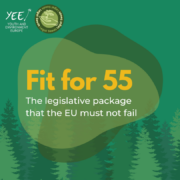
Written by
Contents
Visual summary










Learn more about the project
Share this article
What is Fit For 55?
The European Green Deal significantly raises the EU’s climate ambition to deliver on its multilateral commitments under the Paris Agreement (2015) and put it on a path toward climate neutrality. The FF55 is a set of twelve proposals presented by the European Commission on 14th July 2021 that aims to revise and update EU climate policies with the objective to make a legal obligation for all the EU countries to reduce greenhouse gasses (GHG) to 55% compared to 1990 by 2030. It implements and meets the longer-term Green Deal, by aligning with the EU objective of reaching climate neutrality by 2050.
The aim is to guarantee a just and socially fair transition and strengthen innovation and competitiveness of EU industry while ensuring a level playing field vis-à-vis third country economic operators. Furthermore, it is used as a tool for the EU to lead the way in the global fight against climate change.
The Fit for 55 package’s proposals were presented and discussed at a technical level within the Council’s working parties responsible for the policy area concerned before they landed on the table of EU member states. Discussions are held to prepare the ground for an agreement on the proposals among the 27 member states. EU ministers, in various Council configurations, then exchanged views and seeked an agreement on a common position on the proposals. This forms the basis on which the presidency of the Council then engaged with the European Parliament in negotiations to find a common agreement in view of the final adoption of the legislative acts.
The Fit for 55 package was submitted to the Council in July 2021 and it is being discussed across several policy areas, such as environment, energy, transport, and economic and financial affairs. Concretely, the FF55 is composed of different rules regulating climate-related sectors and includes a high variety of sectors, among which the: Renewable Energy Directive (RED); The Emission Trading System (ETS); The Effort Sharing Regulation (ESR); The Land Use, Land Use Change, and Forestry Regulation (LULUCF).
2019, 2020 & 2021 – How do we achieve climate neutrality?
The Fit for 55 takes its sources in 2019 when the EU leaders endorsed the 2050 Climate neutrality objective. Poland was the only one to express reservations on the subject. Following this resolution, in October 2020 the EU leaders discussed the EU’s Climate ambition for 2030 and the Council adopted conclusions on the EU biodiversity strategy for 2030.
Things accelerated in April 2021 when the Council and the Parliament reached a provisional agreement of reducing greenhouse gasses (GHG) to 55% compared to 1990 by 2030. On 20 July 2021, EU environment ministers discussed FF55 during an informal meeting, and from this date, the official discussion started.
The first formal minister debate took place on October 6 and was focused on the impact of the proposals on citizens, emissions trading to buildings, and road transports.
For the last meeting of the year 2021, the environment Council took note of a progress report prepared by the Slovenian presidency and held a policy debate on five of the files in FF55 which are:
- revision of the greenhouse gas emission allowance trading scheme (EU ETS)
- revision of the regulation on binding annual greenhouse gas emission reductions by member states (effort sharing regulation)
- revision of the regulation on greenhouse gas emissions and removals from land use, land use change and forestry (LULUCF)
- revision of rules for CO2 emission performance standards for new cars and vans
- regulation establishing a social climate fund
*Infographic – Fit for 55: how the EU will turn climate goals into law
2022 – securing the energy supply
On 24 February 2022, the Russian invasion of Ukraine started. Since then, the EU has been facing the challenge of security of energy supply due to its dependency on Russian gas, and as 45% of natural gas consumed by the EU comes from Russia, it was quickly necessary to find alternative sources and therefore, by force of circumstance, to review the FF55 energy plan.
Thus, within the Parliament, ongoing discussions target the ways in which these rules can be amended, changed, and updated to meet the climate policy objectives. The European Commission presented on March 8 the idea of coming up with a new project which aims at phasing out Russian fossil fuels and becoming more autonomous and independent regarding its energy supply and security. The plan was well received by EU leaders, who signed the Versailles declaration. They all agreed on the necessity to make the EU independent from Russian energy imports as soon as possible. On May 18, the Commission presented the REPowerEU plan, and a week after the EU Energy Platform Task Force was established to secure alternative supplies.
On 29 June 2022, the Council of the EU adopted a common position on the package presented in July 2021 by the Commission. A general approach under the French Presidency was agreed on, which differs in significant ways from the European Parliament’s Committee for Industry, Research, and Energy (ITRE) report.
More precisely, Member States adopted a common approach to the EU emissions trading system (EU ETS), effort-sharing between member states in non-ETS sectors (ESR), emissions and removals from land use, land-use change and forestry (LULUCF), the creation of a social climate fund (SCF) and new CO2 emission performance standards for cars and vans.
The Council supports a binding renewable energy sources (RES)target of only 40 % by 2030, reflecting the Commission’s original proposal (July 2021). The general approach offers Member States the flexibility to choose between a 13% reduction in GHG intensity or a 29 % share of RES in the final energy consumption in the transport sector by 2030. The general approach proposes lower sub-targets for mainstreaming RES in heating and cooling (+0.8% annually until 2026 and +1.1 % thereafter) and industry (+1.1% annually), but also requires that 35 % of the hydrogen used in the industry should come from RFNBOs by 2030, rising to 50 % by 2035.
This common position is called “general approaches”.
The year 2022 ended up with endless negotiations regarding nuclear power. The socialists and greens support banning atomic power, but some countries, more nuclear-dependent such as France, are opposing the above positions towards atomic energy. Finally, on July 6, the Parliament voted to record nuclear power as renewable energy. The chapter on renewable energies of FF55 is therefore greatly impacted since the threshold to be met will now include not only solar and wind energy but also renewable nuclear and gas.
2023 – planning ahead
Even though 2023 just started 3 months ago, the discussion around the possibility of setting national sustainable aviation fuel (SAF) is still in process. Indeed the aviation industry is one of the main parts of Fit For 55. Under this regulation, all planes departing from an EU airport will have to refuel as they become available with sustainable aviation fuel (CAD) — low-carbon alternatives to kerosene made from advanced biofuels and hydrogen-derived green synthetic fuels.
The European Parliament and the Council do not agree on the percentage of CAD to be imposed — the Parliament wants 85% by 2050, while the Council sticks to the 63% proposed by the Commission — and on the matters first to be designated as “sustainable”.
The inclusion of nuclear as a potential energy source to create synthetic fuels was the red line for Socialist (S&D) and Green (Greens/EFA) MEPs.
FuelEU Maritime, the sibling of ReFuelEU Aviation, will also be negotiated in 2023.
Unlike the aviation fuel law, FuelEU does not mandate the type of fuel that must be used in ships. Rather, it sets increasingly strict carbon intensity limits that must be respected.
However, green-minded legislators are concerned that giving the shipping industry carte blanche will see them choose the cheapest rather than the greenest option to meet the targets. Specifically, the option to fuel ships with liquefied natural gas – a fossil fuel – up to 2030 has proven controversial.
Finally, concerning the automotive sector, new thermal engine cars will be banned from sale by 2035. However, the lack of charging stations creates a significant problem for the development of electric cars.
Both the private sector and national governments are working to increase the availability of charging points. In Brussels, the issue is addressed through the Alternative Fuels Infrastructure Regulation (AFIR).
AFIR sets out requirements for the number of charging stations along the EU’s main transport corridors and aims to make it easier to pay for charging, particularly when crossing into another EU country.
Access to Justice in the FF55
Other than being crucial that MEPs find fast, common agreements on these, it is also likely crucial that Member States (MSs) implement and enforce the package. Once adopted by the EU, the package will be in the hands of MSs, which have the responsibility to implement the updates.
The Aarhus Convention, signed in 1998, sets three important pillars —access to information, public participation, and access to justice — which are the cornerstones of environmental and climate governance in Europe. As also parties of the Convention, EU member states and the EU itself have an obligation to implement all its pillars.
Among these pillars, ensuring that EU citizens and NGOs have the right of access to justice is essential to make sure that member states are held accountable in case of disrespect of environmental and climate objectives. Despite the fact that regulations have a direct effect on Member States’ laws, access to justice in environmental matters is still very limited. The right of access to justice has been therefore subject to strong advocacy work from EU environmental NGO. According to them, it is crucial to have a liability mechanism open to civil society for holding MSs accountable for any violation: the climate emergency does not allow delays in the implementation of measures.
With the massive work around the FF55, there is a concrete possibility to include access to justice provisions within EU climate rules and ensure the empowerment of civil society in challenging MSs when not complying with the agreed targets. As a matter of fact, there is neither democracy nor a green Europe without sound and coherent access to justice: the FF55 must not be the exception.
Finally, it is important to remember that FF55 is still open for updates, the negotiations are still in process so NGOs can and must put pressure on Member States to make this agreement sustainable and greener.
More articles

Rivers – anywhere you are in Europe, there must be a river not far from you. Ancient Greeks would marvel at rivers
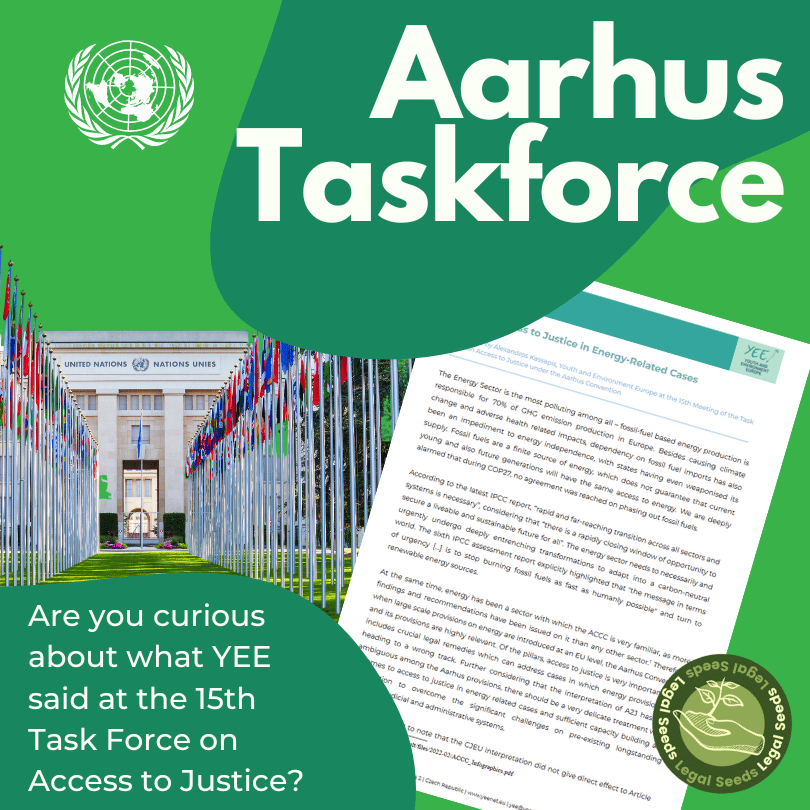
The Environmental Law Team of YEE actively participated in the 15th Task Force on Access to Justice in Geneva, sharing valuable insights.

The discussion within the EU around the Fit For 55 legislative package is at the core of the EU’s current action on
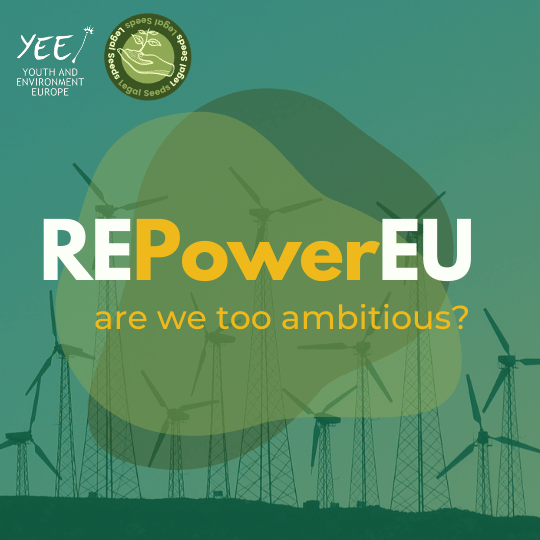
If exiting from the Russian fossil fuels, gas and coal import is a necessity, should it be then done at all costs?
More To Explore
Fit for 55: the legislative package that the EU must not fail
https://yeenet.eu/wp-content/uploads/2023/03/Ff55-Article-Cover1.png 810 810 YEE https://yeenet.eu/wp-content/uploads/2018/11/logo-yee-728x1030.png YEE2023-03-23 08:24:382023-03-31 15:01:18Fit for 55: the legislative package that the EU must not failClimate adaptation at COP27 through a youth lens
Youth and Environment Europe (YEE) and Youth4Nature (Y4N) are international youth-led organisations within the nature-climate nexus that strive to bring the voices of youth from across Europe (YEE) and across the globe (Y4N) to the forefront of environmental discussions and decision-making.
Building on this synergy and upon COP27 momentum – two weeks within the international agenda where all eyes focused on the climate negotiations – the two organisations met on the ground at Sharm el-Sheikh to share knowledge amongst youth peers globally on what adaptation is and how youth experience it, with an emphasis on amplifying diverse youth perspectives and environmental justice.
Points of the discussion
- What does climate adaptation mean for you?
- What have you heard about climate adaptation during COP27?
- What do you think are the gaps and how should we move forward?
- How would you link adaptation to climate justice?
- How can we achieve more involvement in climate negotations?
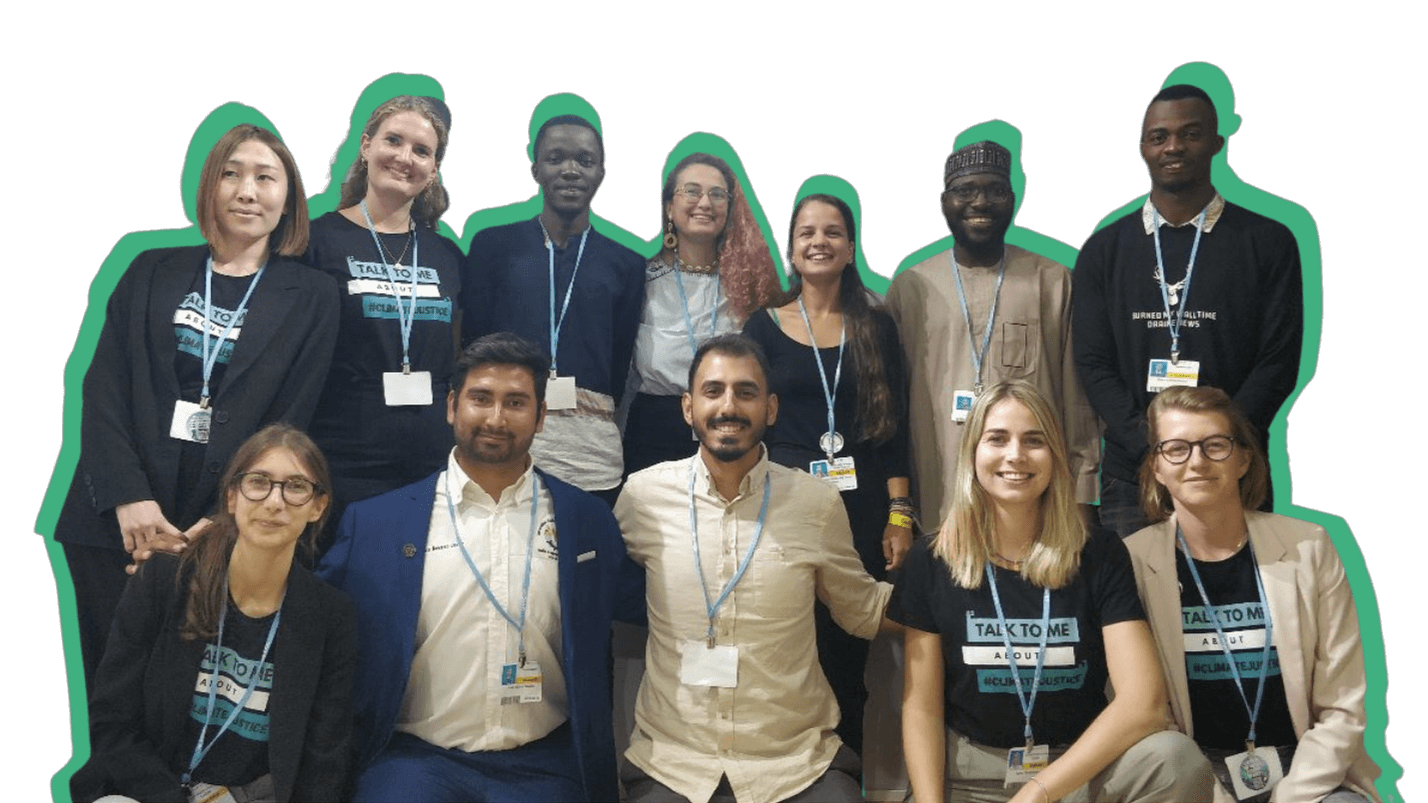





Adaption at COP27 through a youth lens | Report
https://yeenet.eu/wp-content/uploads/2023/03/YEEY4N-COP27-Adaptation-Report-Instagram-Post-Square.png 675 675 YEE https://yeenet.eu/wp-content/uploads/2018/11/logo-yee-728x1030.png YEE2023-03-15 11:26:272023-06-23 09:18:04Adaption at COP27 through a youth lens | ReportOur mission
 YEE aims to unite environmental youth non-profit organisations in Europe in order to enhance international cooperation, increase knowledge about the climate crisis, raise awareness of environmental problems and to strengthen participation of youth in environmental decision-making.
YEE aims to unite environmental youth non-profit organisations in Europe in order to enhance international cooperation, increase knowledge about the climate crisis, raise awareness of environmental problems and to strengthen participation of youth in environmental decision-making.
Information
Get in touch
Vinohradská 2165/48
120 00 Praha 2 – Vinohrady
Czech Republic
E-mail: yee@yeenet.eu
We are supported by
Supported by the Council of Europe through the European Youth Foundation.
Co-funded by the European Union. Views and opinions expressed are however those of the author(s) only and do not necessarily reflect those of the European Union or the European Education and Culture Executive Agency (EACEA). Neither the European Union nor EACEA can be held responsible for them.




